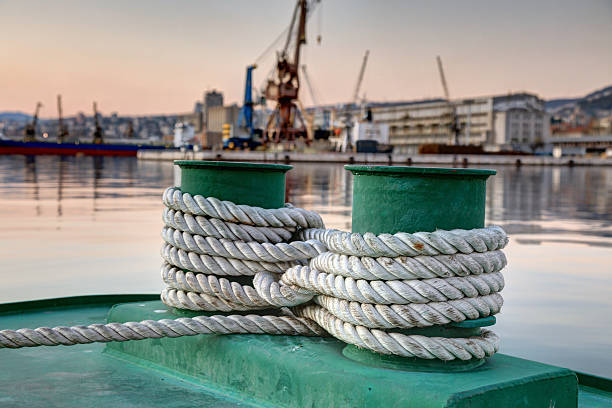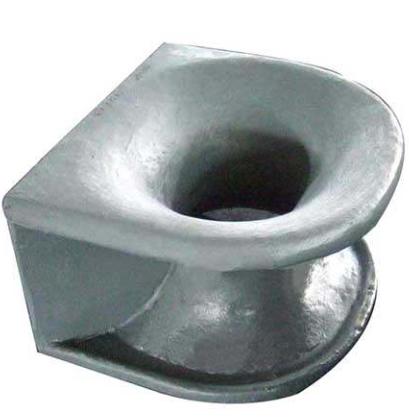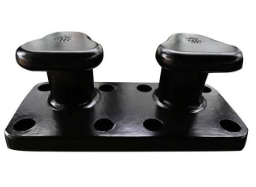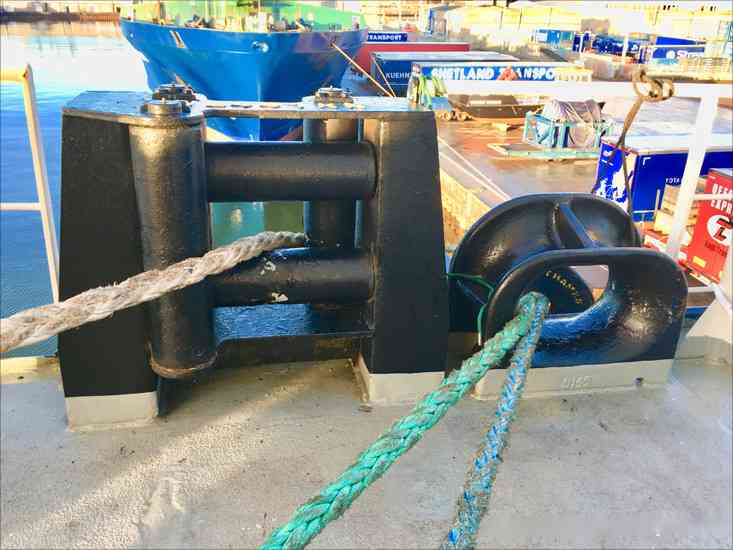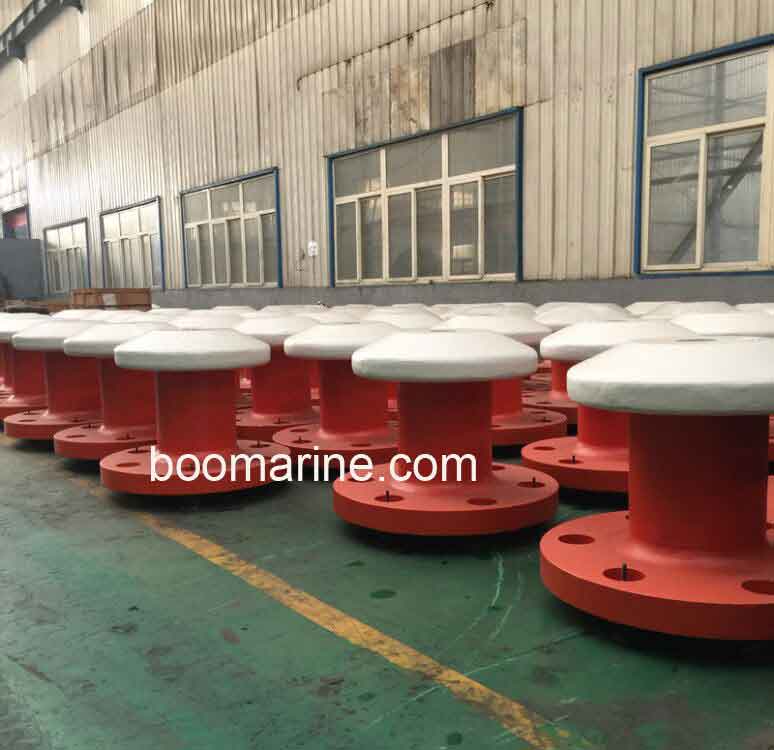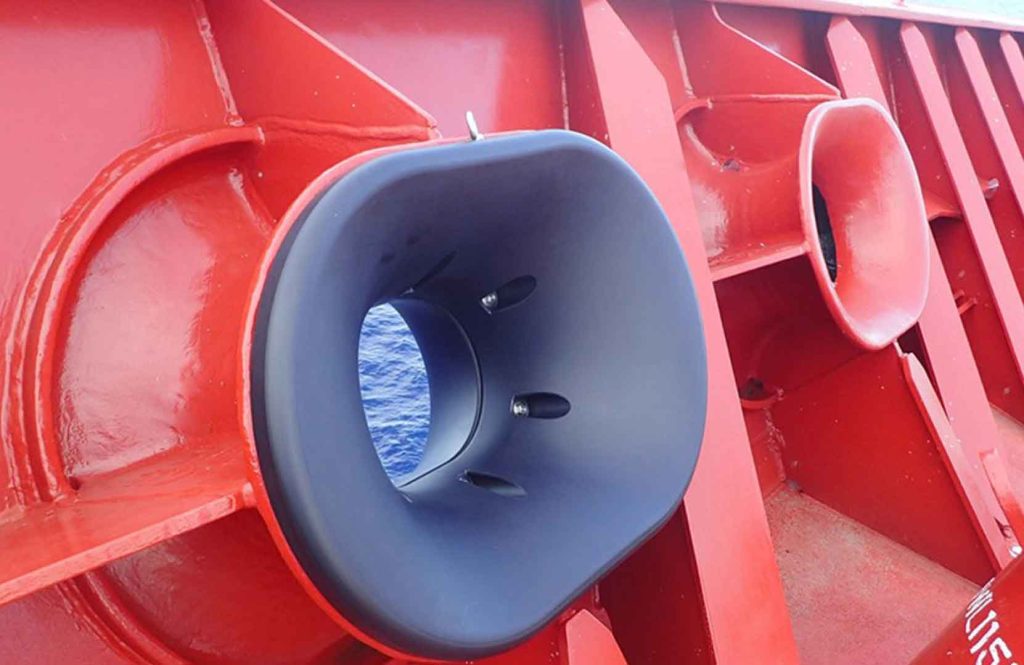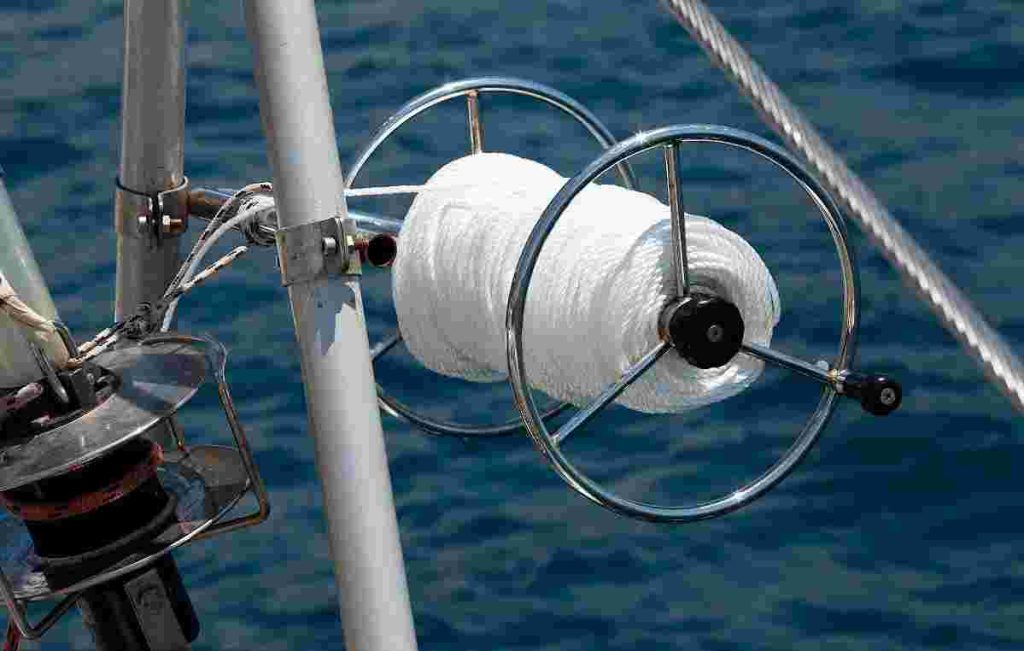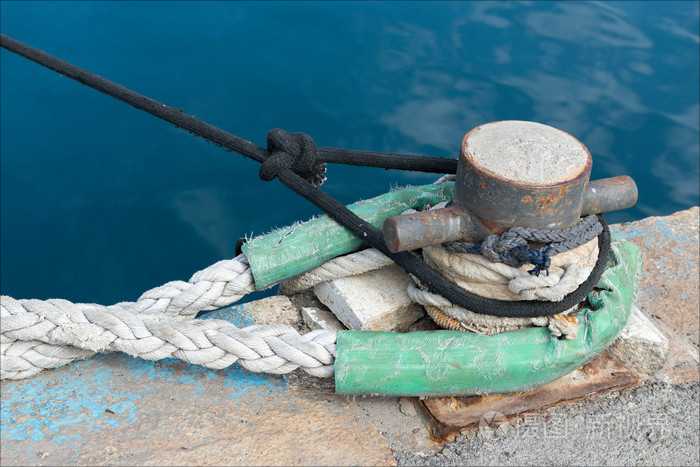Table of Contents
Mooring chocks play a crucial role in the safe and efficient berthing of ships. As vessels arrive at ports and harbors, mooring chocks serve as indispensable fixtures, providing stability and security during the docking process. This article aims to shed light on the significance of mooring chocks in ship berthing operations. It will begin by defining mooring chocks and explaining their purpose. The article will then delve into the importance of mooring chocks, highlighting their role in ensuring secure berthing experiences. Finally, an overview of the article’s focus will be presented, providing a roadmap for exploring the various aspects of mooring chocks and their critical significance.
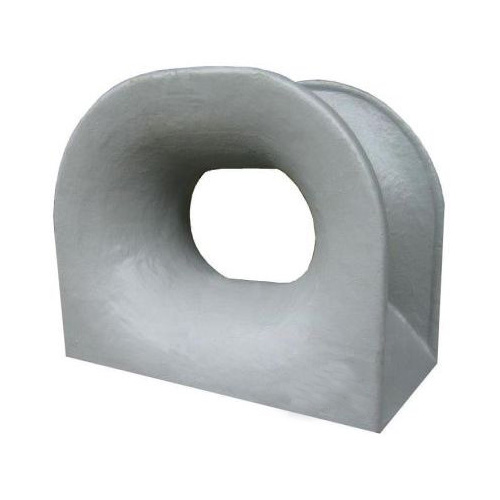
What Are The Definition and Purpose of Mooring Chocks?
Mooring chocks are devices or fittings strategically installed on ships and ports, designed to secure mooring lines and distribute the forces exerted during berthing. They typically consist of sturdy metal structures with open or closed horns that guide and hold the mooring lines in place. The primary purpose of mooring chocks is to provide attachment points for mooring lines, preventing excessive ship movements, and facilitating safe berthing operations.
What is The Importance of Mooring Chocks in Ship Berthing Operations?
The importance of mooring chocks cannot be overstated when it comes to ship berthing operations. These essential fixtures play several key roles, contributing to the overall safety and efficiency of the process.
- Firstly, mooring chocks provide stability by distributing the forces exerted by mooring lines across the ship’s hull. This prevents excessive movement, minimizing the risk of collisions with other vessels or structures.
- Secondly, mooring chocks help maintain the ship’s position and orientation during berthing. By securely holding the mooring lines, they ensure that the vessel remains aligned with the intended berth, allowing for efficient loading and unloading operations. Moreover, mooring chocks enable proper weight distribution, preventing uneven stress on the ship’s structure and reducing the risk of damage or instability.
- Thirdly, mooring chocks contribute to the overall safety of the berthing process. By securely anchoring the mooring lines, they minimize the potential for line failures or slippage, which could pose hazards to both personnel and the vessel itself. Additionally, mooring chocks assist in managing the tension and load distribution on the mooring lines, reducing the risk of excessive strain that could lead to line breakages or accidents.
The Component of Mooring Chocks
Mooring chocks are robust metal structures installed on ships and ports, specifically designed to secure mooring lines during berthing operations. They typically consist of two main components: the chock body and the horn. The chock body is a solid, block-like structure that is firmly fixed to the ship’s deck or the port infrastructure. It provides a stable base for the mooring chock and acts as an anchor point for the mooring lines. The horn, which is an integral part of the chock body, extends upward and outward at an angle, providing a guide for the mooring ropes.
Different Types of Mooring Chocks and Their Applications:
Mooring chocks come in various types, each designed for specific applications and vessel requirements. The most common types include open chocks, closed chocks, and roller chocks.
Open Chocks: Open chocks have an open-ended horn, allowing easy access for attaching and detaching mooring lines. They are versatile and suitable for various vessel sizes and mooring line configurations. Open chocks are commonly used in general-purpose berths and are ideal for vessels with a wide range of mooring requirements.
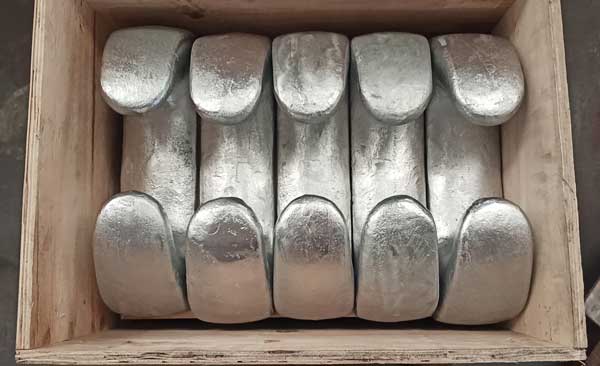
Closed Chocks: Closed chocks, as the name suggests, have a closed horn with a small opening through which mooring lines can be threaded. Closed chocks provide added security, preventing accidental line slippage or dislodgement during berthing operations. They are commonly used in situations where higher line security is desired, such as in heavy-weather berths or for vessels with substantial mooring line loads.
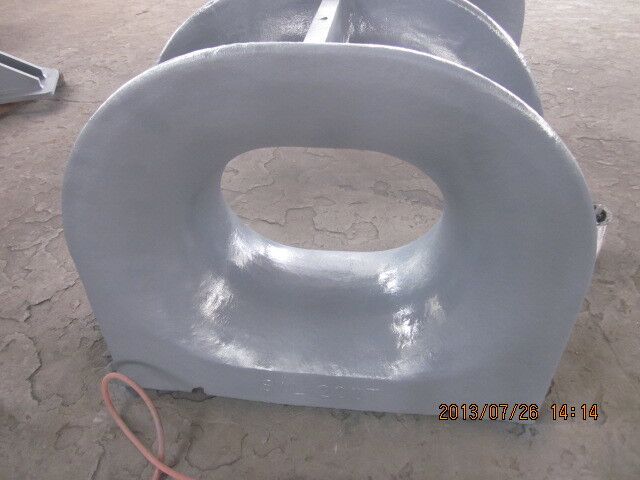
Roller Chocks: Roller chocks incorporate rollers within the horn, allowing smooth movement and reduced friction when mooring lines are subjected to dynamic loads. These chocks are especially useful in situations where vessels experience significant tidal or wave motion. Roller chocks enable the mooring lines to adjust to changing conditions without excessive strain or jerking, ensuring safer and more efficient berthing.
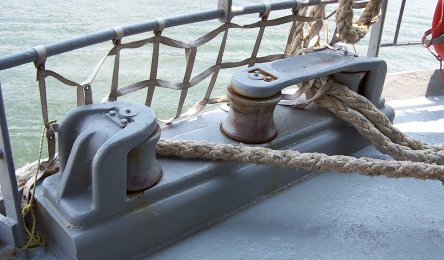
Panama Chocks: The Panama chock is sometimes called the Panama Bow or the Panama Canal. It was made in accordance with the requirements of a shipping notice issued by the Panama Canal Commission in December 1999. It can be either mounted directly onto or into the hull (Type BC), or be supplied with a base plate to be bolted to the plinth (Type AC).
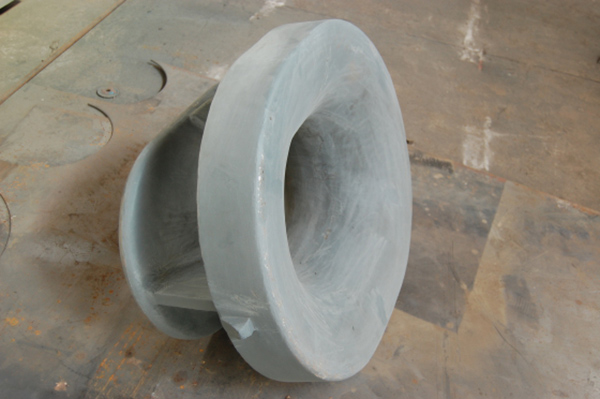
What are The Functionality and Working Principles of Mooring Chocks?
Mooring chocks serve several key functions during ship berthing operations. Firstly, they provide stability by distributing the forces exerted by the mooring lines evenly across the ship’s hull or port infrastructure. This prevents excessive movement, maintaining the vessel’s position and minimizing the risk of collisions or damage.
Secondly, mooring chocks act as guides for mooring lines, ensuring proper alignment and preventing entanglement. The horn component of the chock provides a clear pathway for the mooring lines, reducing the potential for tangling or interference between lines.
Thirdly, mooring chocks facilitate load distribution by effectively distributing the tension and loads exerted by the mooring lines. This helps to minimize stress concentrations on specific areas of the ship’s structure or port infrastructure, enhancing safety and reducing the risk of structural damage.
The working principle of mooring chocks revolves around securely holding the mooring ropes in place, allowing controlled movement of the vessel while preventing excessive strain or slippage. The design of the chocks, whether open, closed, or roller-type, ensures that the mooring lines remain adequately tensioned and aligned throughout the berthing process.
By fulfilling these functions and working principles, mooring chocks play a critical role in safeguarding ships and ensuring secure berthing experiences. Understanding their functionality and different types is essential for efficient and safe ship berthing operations.
Ensuring Secure Berthing with Mooring Chocks
A. Role of Mooring Chocks in Ship Stability and Safety during Berthing:
Mooring chocks play a vital role in maintaining ship stability and safety during the berthing process. By securely anchoring the mooring lines, they prevent excessive ship movements that could lead to collisions with other vessels or structures. Mooring chocks act as reliable attachment points, distributing the forces exerted by the mooring lines across the ship’s hull or port infrastructure. This even distribution of forces enhances the vessel’s stability, reducing the risk of tilting, rolling, or unexpected shifts during berthing.
B. Preventing Excessive Ship Movements with Mooring Chocks:
One of the primary functions of mooring chocks is to prevent excessive ship movements during berthing. By securely holding the mooring lines in place, mooring chocks minimize the risk of uncontrolled drift or sway caused by external factors such as currents, wind, or waves. The firm attachment provided by mooring chocks ensures that the vessel remains aligned with the intended berth, allowing for safe and efficient loading and unloading operations. This prevention of excessive ship movements also reduces the potential for damage to both the vessel and nearby structures.
C. Distributing and Managing Mooring Loads Effectively:
Mooring chocks are instrumental in distributing and managing the loads exerted by the mooring lines. During berthing, mooring lines experience significant tension and force as they hold the vessel in position. Mooring chocks play a critical role in evenly distributing these loads across the ship’s hull or port infrastructure. By spreading the forces, mooring chocks help to mitigate stress concentrations on specific areas, ensuring the structural integrity of the vessel and the port infrastructure. Effective load distribution also minimizes the risk of overloading individual lines, reducing the likelihood of line failures or accidents.
D. Reducing Wear and Tear on Mooring Lines and Deck Structures:
Mooring chocks contribute to the longevity and reliability of mooring ropes and deck structures by reducing wear and tear. By providing secure attachment points and guiding the mooring lines, chocks minimize friction and abrasion that can occur when lines rub against sharp edges or rough surfaces. This helps to preserve the integrity of the mooring lines, extending their lifespan and reducing the need for frequent replacements. Additionally, mooring chocks prevent excessive strain on the deck structures, minimizing the risk of damage or deformation caused by intense mooring line forces. By reducing wear and tear, mooring chocks contribute to the overall safety and cost-effectiveness of ship berthing operations.
Conclusion
In conclusion, mooring chocks are essential for ensuring secure berthing experiences. They play a vital role in ship stability and safety, preventing excessive ship movements, distributing and managing mooring loads effectively, and reducing wear and tear on mooring lines and deck structures. By understanding and appreciating the significance of mooring chocks, ship operators and port authorities can enhance the safety, efficiency, and longevity of berthing operations.

